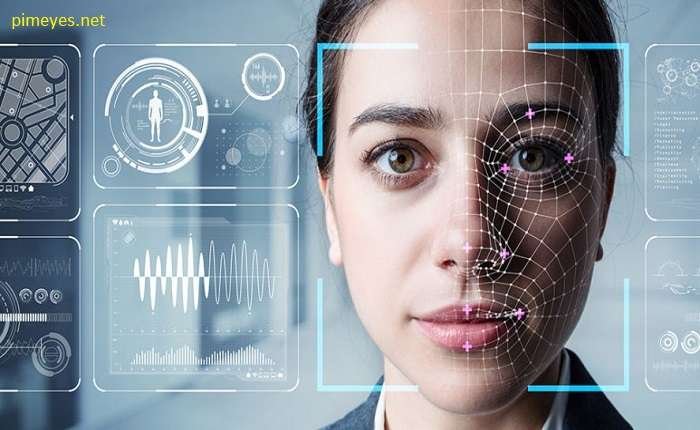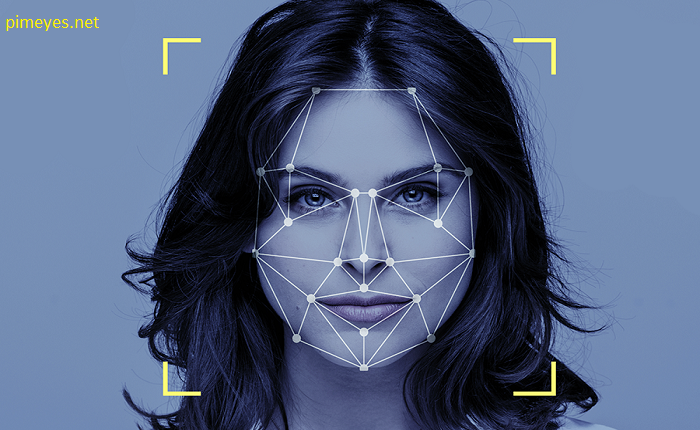
AI face recognition, or face ID, is a technology that can identify or confirm a person by analyzing facial features from a photograph or video. This system is based on algorithms trained on huge datasets of faces that identify unique patterns. There is evidence of how AI face recognition revolutionized many industries, from security to healthcare, by providing a fast and accurate identification process.AI face recognition is just like human face recognition, but instead of the brain, we have to use a machine learning algorithm. This is why it has been incorporated in devices and systems worldwide, from smartphones to surveillance cameras to payment systems. face recognition is so efficient because of its flexibility and learning ability, which allows it to identify faces even in adverse situations.
How Does AI Face Recognition Work?
AI Algorithms for Fence Recognition It is a multi-stage process, beginning with detecting a face in an image or video and then extracting unique features such as the distance between eyes or the shape of the jawline.AI algorithms then translate these features into mathematical representations known as face embeddings. These embeddings are searched against a database to identify a match. AI face recognition is primarily based on deep-learning methods, which enable the system to learn unique facial feature patterns and adapt through incremental learning.face recognition is the complex process of recognizing faces through the involvement of convolutional neural networks trained on labelled datasets as a purely innovative initiative but getting it to work in real-time competent systems that are optimized. The extensive applications across various sectors demonstrate its ability to transform contemporary technology.
Uses of AI Face Recognition in Daily Life
The uses of AI face recognition are extensive and ever-growing. Technology is changing how we interface with devices and systems in our daily lives, from unlocking smartphones to improving public safety.A notable use case for AI face recognition is in security and surveillance — it helps identify social media users, illegal access, criminals, people in crowds, and restricted areas. In the healthcare sector, it also assists in patient identification and monitoring. Retailers employ face recognition to tailor the shopping experience for customers, and the banking industry implements it for secure authentication during financial transactions.In addition, AI face recognition is used by governments and law enforcement agencies for crime prevention and border control. As technology moves forward, face recognition is becoming increasingly adopted.
Advantages of AI Face Recognition Technology
The benefits of AI Face Recognition make it one of the pillars of modern technology. 3433935656Its unmatched capability to improve security, minimize friction, and deliver a better user experience One of the most significant benefits of AI face recognition is in the field of public security, where AI can help with the identification of suspects, and prevention of crimes. In the private sector, it strengthens cybersecurity through secure device and system access. Customer Profiling and Personalized Marketing Strategies: Apart from this, the businesses are using AI for customer profiling and personalized marketing strategies. face recognition is also essential for access; technology based on face authentication is vital for persons with disabilities. It can quickly process and analyze data, making it efficient for various applications, from law enforcement to healthcare. In conclusion, the advantages of face recognition highlight its significance in the digital era.
AI Face Recognition: Ethical Dilemma
Although AI face recognition brings excellent benefits, it also has ethical issues. This belief is primarily based on the top concern, privacy invasion, as the technology tends to collect and retain biometric data without user authorization. Bias in face recognition systems also causes discrimination when the AI fails to recognize some demographic. With regulations and oversight often fuzzy or lacking altogether, this will also require a greater focus on ethics. Organizations should implement transparency practices to address these concerns, such as getting consent and safeguarding data. In response, local policymakers must put forth strong safeguards to ensure that face recognition is not abused. That said, handling these ethical implications is key to the safe application of this revolutionary tool.
This is followed by challenges faced in the implementation of AI face recognition.
The integration of AI face recognition also has its own unique problems. One significant limitation is the system’s accuracy, especially in real-world conditions where lighting and angles come into play. Privacy and security are other significant issues since misusing facial data could lead to identity theft or unauthorized surveillance. In addition, the expensive cost of developing and maintaining AI face recognition systems hinders many organizations. These challenges can be addressed by means of practical algorithms, secure data management systems, and cost-effective solutions. Overcoming these challenges and unlocking the full potential of face recognition has been a challenge to address by cooperation between governments, research, and industry.
AI Face Recognition and its Role in Public Safety
AI face recognition has a role in improving public safety. It helps law enforcement agencies track suspects and prevent crimes by allowing individuals to be identified in real time. AI recognition surveillance systems can monitor huge crowds,identify threats , and notify authorities. This is especially beneficial in security-sensitive environments like airports, public events, and border security.While AI face helps protect the public, it comes with the challenges of ethical and humane adaptation for use in society. While taking advantage of the technology for safety and security, transparency and accountability must be maintained to continue to instill public confidence.
Next Generation of AI Face Recognition Technology
This has the potential for future AI face recognition trained on data until October 2023. Technologies like 3D facial recognition and emotion detection have been developed for new applications. face recognition systems will be encoded with additional features like this one, and integration with other AI technologies will be used to functionalities together, such as natural language processing and augmented reality. Such developments will result in increasingly accurate, efficient, and versatile applications across various industries.
Data collection, testing, and AI recognition development will continue to break new ground. In the digital era, this technology is a major breakthrough with the potential to revolutionize industries and enable innovations that could transform our lives.
REGULATING AI FACE RECOGNITION: BALANCING INNOVATION AND SAFETY
On the one hand, we need to ensure that AI face recognition is not deployed unethically, while on the other hand, we need regulations that will not stifle innovation. Finding a good balance between managing this oversight and freeing creativity will be key to discovering its full potential. Instead, regulation should be about transparency, data protection, and accountability—and addressing issues like privacy invasion and bias. Simultaneously, it has to incentivize innovation by providing funds geared towards R&D projects. We need cooperation between governments, industry leaders and researchers to build a framework that enables regulation while fostering innovation. Table of Contents This dual approach will set the stage for responsible, impactful growth in face recognition.
Conclusion
With significant potential across businesses and lives, AI face recognition technology is nothing less than a game-changer. Although its advantages are many, resolving ethical issues and implementation difficulties is crucial to ensure responsible deployment. Striking the right balance between regulation and innovation can harness the powerful capabilities of face recognition to build a more secure, efficient and equitable future.
FAQs
How does the AI face recognition work? Let us give you an overview of the astounding applications of AI face recognition, which are extensively used in a range of industries for security, authentication, personalized services, and more.
What is AI face recognition, and how does it work? It does so via detection, analysis, and facial feature matching through machine learning algorithms and neural networks.
What is the controversy over AI face recognition? Ethical issues surrounding AI face recognition include privacy invasion, bias, and lack of regulation.
How accurate is AI face recognition? Although mostly right, lighting conditions, camera angles, and dataset quality can still affect the performance of face recognition algorithms.
Future of AI Face Recognition: What to Expect? Future capabilities encompass 3D facial recognition, emotion detection, and integration with other forms of artificial intelligence, opening up potential applications in various domains.

